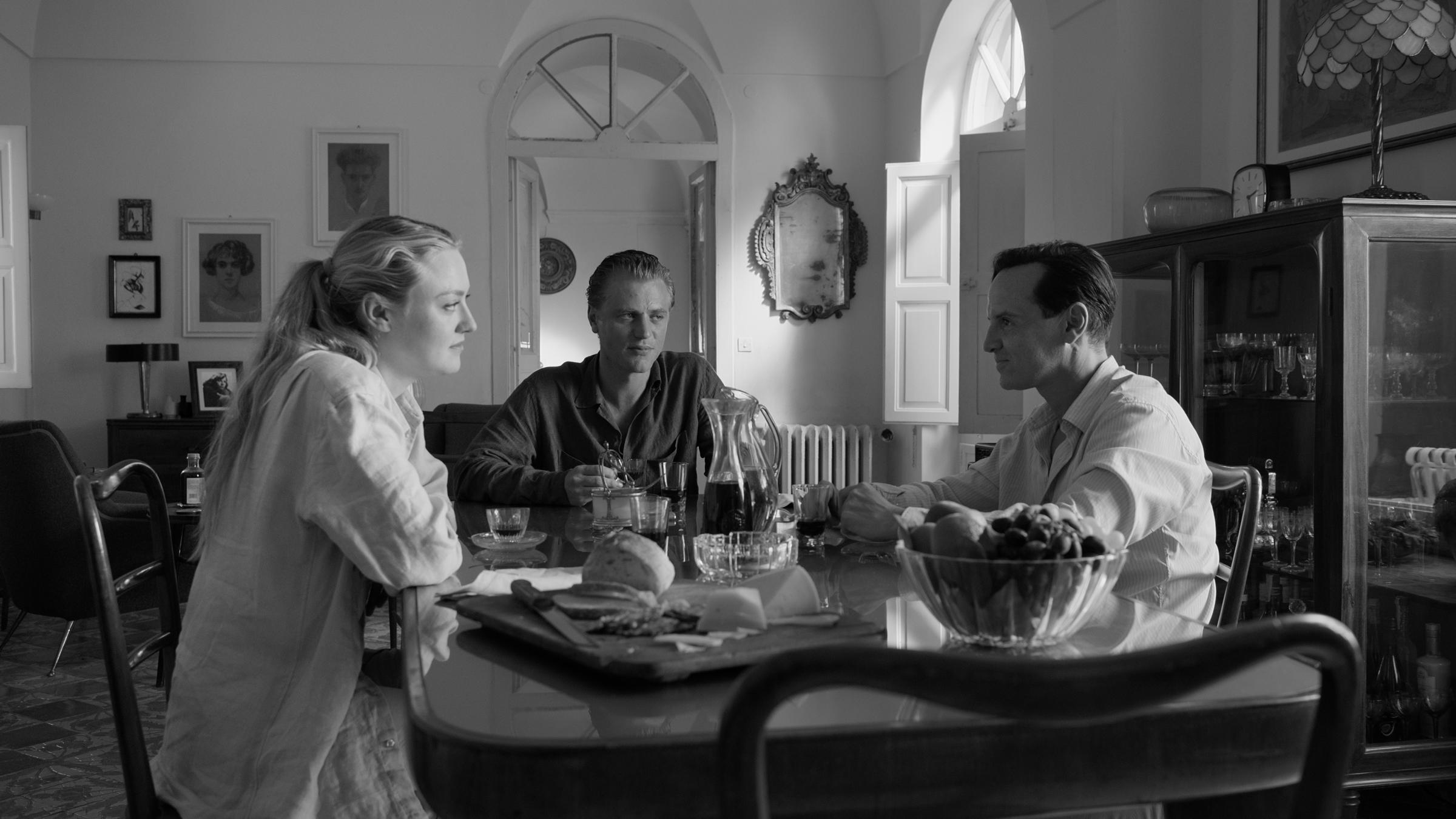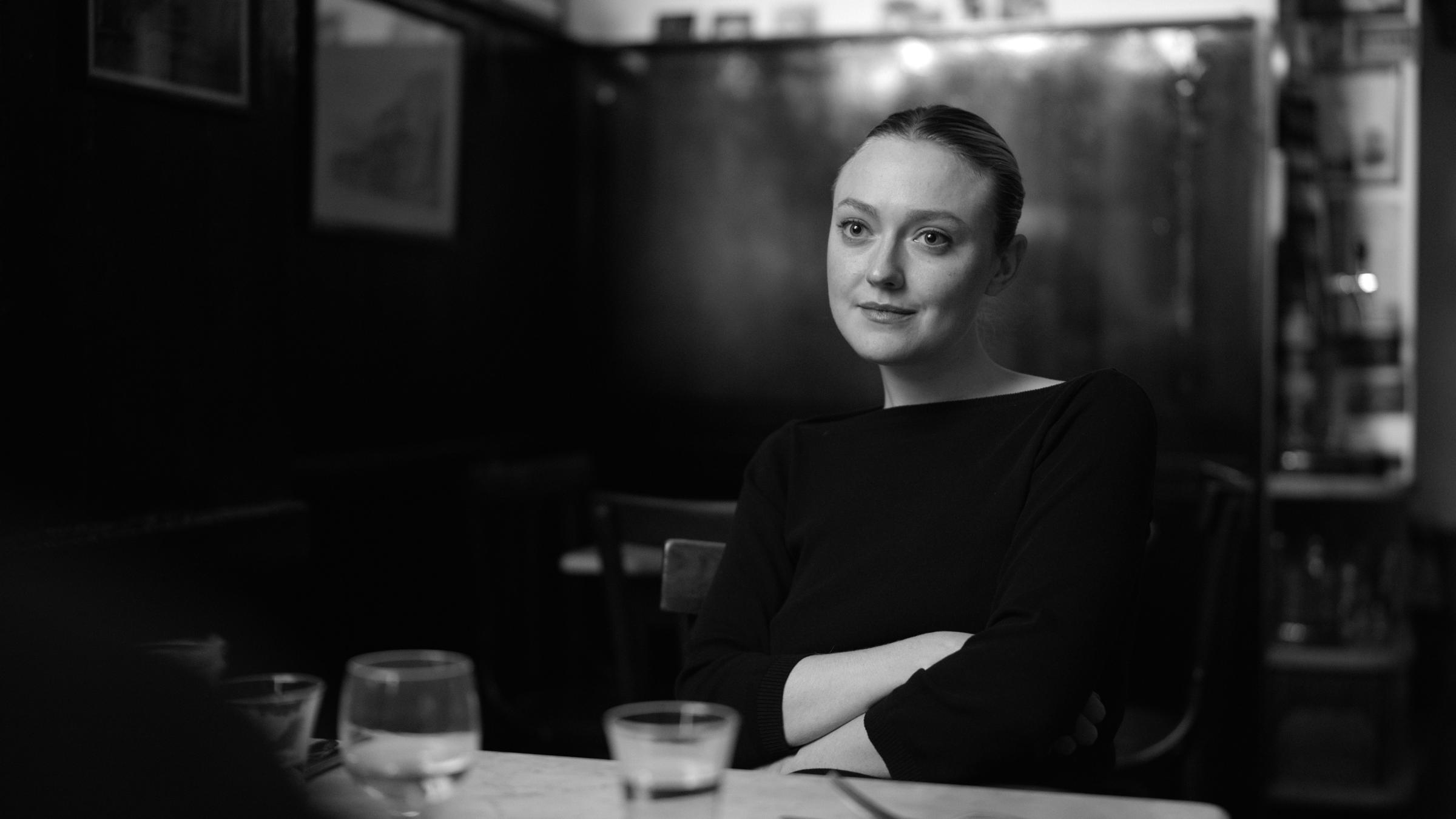A crucial scene in Ripley, the latest adaptation of Patricia Highsmith’s classic thriller The Talented Mr. Ripley, places the eponymous grifter in Rome’s Galleria Borghese. As a tour guide lectures on Caravaggio’s David With the Head of Goliath, Tom Ripley drifts toward the painting. “Caravaggio links the killer and victim,” the docent explains, in Italian, “by portraying David as compassionate, even loving, in the way he gazes at the severed head of Goliath. And he made this bond even stronger by using himself as the model for both. Both are Caravaggio’s face.”
Highsmith never so much as mentions the artist’s name. But this moment, which takes place midway through the gorgeously realized yet torpid, ultimately a bit vapid eight-part drama, is neither the first nor the last time Caravaggio comes up in Ripley, now streaming on Netflix. A Baroque master equally famous for portraiture whose chiaroscuro illuminates his often-biblical subjects’ emotions and for killing a man in a Roman street fight, the painter becomes a sort of double for Tom—a tricky character played with dynamism and restraint by Andrew Scott. The series seizes on the book’s obsession with aesthetics, reimagining the 1955 page-turner as a Künstlerroman and its murderous antihero as an artist whose medium happens to be crime.

Its eight-hour runtime allows Ripley to hew more closely to the novel’s tortuous plot than either the 1960 French film Purple Noon, which cast a young Alain Delon in the Ripley role, or Anthony Minghella’s beloved version, from 1999, starring Matt Damon, Jude Law, and Gwyneth Paltrow. Tom is a small-time scammer scraping by in early-1960s New York City when he’s summoned to meet with Herbert Greenleaf (Manchester by the Sea filmmaker Kenneth Lonergan), a shipping magnate whose son Richard has been living in Italy on a trust fund. Herbert wants the young man to come home, and he’s willing to pay a friend—Tom vaguely remembers Richard, as Dickie—to retrieve him. But upon arriving in the beach town where Dickie (Johnny Flynn) has set up house, he finds his unwitting host too entrenched in his dilettante’s routine of dabbling in painting and flirting with an American neighbor, Marge Sherwood (Dakota Fanning), to budge. Tom’s objective soon shifts to prolonging his own stay. Spooked by Tom’s growing fixation on him, Dickie tries to shake off his guest but only succeeds in awakening Tom’s inner psychopath.
There are two excellent reasons to savor the series, in all of its languor. The first is the care The Night Of creator and The Irishman screenwriter Steven Zaillian, who wrote and directed every episode, has taken in making it. The performers around Scott are smartly cast; Flynn captures Dickie’s blitheness, while Fanning endows the embattled Marge with some agency. Also superb, and too often overlooked on TV, is the sound design. Shrill doorbells, front-desk service bells, and especially ringing telephones torment Tom, threatening to expose his deceptions. Zaillian successfully translates into visual language motifs from the book, like Tom’s fear of water. In coastal cities from Naples to Venice, the sea glitters tantalizingly in the afternoon sun, but beneath its surface lurks an unknowable expanse of bottomless blackness.

At first, the black-and-white cinematography might seem pretentious—an easy way of elevating Ripley above the standard, art-agnostic Netflix original. But director of photography Robert Elswit, who collaborated with Paul Thomas Anderson on There Will Be Blood and Inherent Vice, earns the limited palate. Tom’s lowlife New York has the grit of tabloid crime-scene photos. In Italy, where statues grace piazzas, carved cherubs cling to building facades, and ancient crosses are everywhere, Elswit’s postcard panoramas could come straight out of mid-century Italian films by Fellini or Antonioni or Rossellini. In a profile of a killer who worships art for art’s sake, these allusions make sense. By avoiding the sun-drenched golden tones of Purple Noon and Minghella’s adaptation, the series also establishes a colder, more sinister mood.
Ripley’s other great asset is Scott, who, at 47, may be more than two decades older than his character as conceived by Highsmith (he doesn’t look it) but has nonetheless given us the first definitive onscreen Ripley. Delon’s performance is a study in glamorous cruelty, yet it offers no glimpse of Tom’s evolution from awkward and aggrieved petty crook to worldly and polished criminal mastermind. Damon’s Tom does transform, but the actor’s aw-shucks wholesomeness in early scenes fails to persuasively foreshadow the protagonist’s violent potential.

Scott registers every shade of the chameleonic con man. When we meet him, he’s clearly stifled by his meager existence and uncomfortable in his own skin. As Highsmith wrote, Tom “had always thought he had the world’s dullest face, a thoroughly forgettable face with a look of docility that he could not understand, and a look also of vague fright that he had never been able to erase.” Scott is at his most captivating in long, solo scenes of Tom grimacing with the effort of dragging suitcases around unfamiliar cities or cleaning up after his impulsive murders.
Those labors pay off. Tom Ripley begins to merge with Dickie Greenleaf, affecting the confidence and ease that come with extreme privilege until he internalizes them. Is he in love with Dickie, or does he want to be Dickie, or both? Is there even a difference? By the end of the season, he’s shed this persona as well and recreated Tom in the image of Caravaggio—down to the wild hair and goatee. He is an artist now, achieving through illusion and fabrication and impersonation feats we’re meant to understand as rivaling his idol’s timeless masterpieces.
It makes for a tidy finale, culminating in a sly twist that Zaillian adds in the very last scene. The trouble is that, for all its technical and narrative elegance, Ripley doesn’t quite earn the Caravaggio comparison. Yes, homoeroticism permeates both the artist’s biography and Tom’s. Both men wander Italy, 450 years apart, in flight from their crimes. And in a story where Tom plays black swan to Dickie’s white, there is some symmetry in giving the former another icon to emulate: two sets of doubles. Yet mere cleverness makes the ending feel glib. Eight long episodes whose artful slowness rob suspense from what is, after all, supposed to be a thriller demand a more profound resolution. Caravaggio alchemized the rage that defined his life into paintings whose brilliance has outlived him by centuries. Tom Ripley enriches himself, and only himself, through violence and fraud. Both may be geniuses, but the similarities end there.
More Must-Reads from TIME
- Donald Trump Is TIME's 2024 Person of the Year
- Why We Chose Trump as Person of the Year
- Is Intermittent Fasting Good or Bad for You?
- The 100 Must-Read Books of 2024
- The 20 Best Christmas TV Episodes
- Column: If Optimism Feels Ridiculous Now, Try Hope
- The Future of Climate Action Is Trade Policy
- Merle Bombardieri Is Helping People Make the Baby Decision
Contact us at letters@time.com